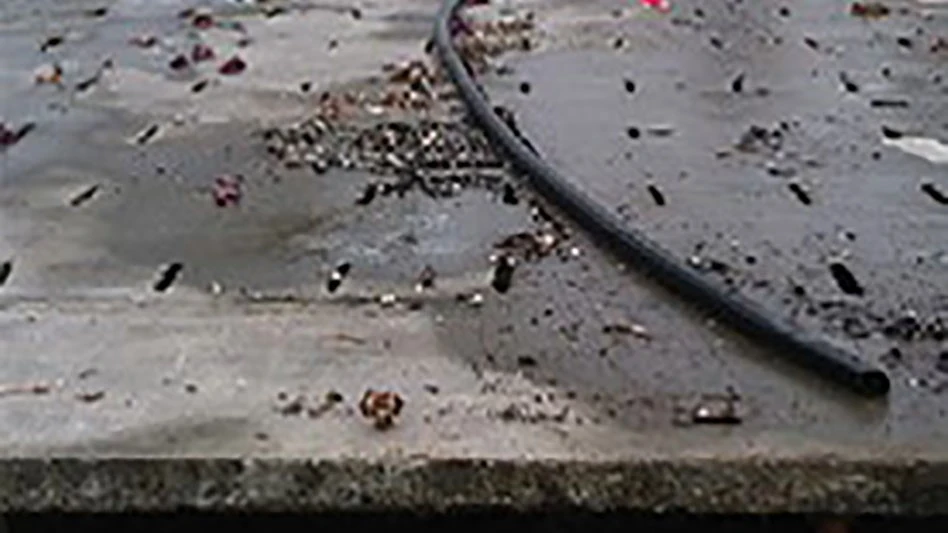

Greenhouse sanitation is the first step in managing and preventing pests and pathogens from destroying your crops. Make sure staff understands the importance of sanitation and how it relates directly to the bottom line.
Weeds and debris
A good and easy first step in greenhouse sanitation is to physically remove all crop debris. Weeds, plant debris and unsalable plants can serve as sites for insects and mites to live and for diseases to develop, progress or spread. Remove all weeds and crop debris and place them in a tightly sealed, covered garbage bin so that pests and pathogens are not able to migrate out of the trash and into your crop. Remember to remove the trash daily. Remove spilled media because organic residues from plants and growing media reduce the effectiveness of disinfectants.
Compost
If you compost the removed organic material, make sure the compost pile is at least 30 feet away and not uphill or downwind from the greenhouse. Situating the compost pile in this manner will prevent pests from migrating from the compost pile back to the greenhouse. When removing diseased or infested plants, discard them into containers or bags that are immediately adjacent to the plants and seal the container or bag to transport them out of the greenhouse immediately. In this way, inoculum or insects are contained and not spread throughout the greenhouse during transport.

Cleaning surfaces
Once all surfaces are free of organic matter, consider power-washing structures and walkways with soap and water when in between cropping cycles. Then, clean those same surfaces with a disinfectant. Make sure propagation or pruning tools such as knives, scissors, etc., are properly disinfected after being used on each bench or each variety or cultivar.
Pots and trays
It is also best not to reuse pots as some diseases are capable of surviving on recycled trays and thus infecting new crops. However, if you must use recycled containers, be sure that all organic matter is removed from the pots first and then disinfect them properly with a bleach, quaternary ammonium or peroxide product. Some of these cleaning products have a short life span, so you may need to create new batches of disinfectant frequently while you are using it.
Hoses and nozzles
Also, remember to train employees to keep all irrigation hose nozzles off the ground. In fact, any tool that touches the floor should be disinfected before it touches any growing surfaces. While it may be tempting to do so, do not reuse growing media that has fallen on the floor during potting or during container filling operations due to the potential for contamination.

Personnel and visitors
Once the greenhouse is sufficiently sanitized, to maintain the cleanliness, consider restricting entry into growing areas to necessary personnel and supervise all visitors. Consider requiring everyone to clean their shoes before entering growing areas by first removing any soil on the shoes and then using a foot bath or foot mat that contains disinfectant. Remember to change the disinfectant daily in these foot baths or mats. Also, make sure employees wash their hands thoroughly with warm, soapy water and perhaps other sanitizing products as well before work and at intervals throughout the day before handling plants. Think about having employees use protective clothing, such as disposable or sterile coveralls, gloves or shoe coverings, during potting or transplanting, when taking cuttings or rouging diseased plants. Remove and dispose of used protective clothing before working with healthy plants.
With proper cleanliness protocols in place, don't introduce new problems from plant materials being brought into the greenhouse. Purchase high quality certified, disease-free stock whenever possible. Consider arranging a visit to your plant supplier to see their sanitation program. When you bring in new plant material, quarantine it in a separate area at first to inspect for disease and insects.

Explore the December 2022 Issue
Check out more from this issue and find your next story to read.
Latest from Produce Grower
- TIPA Compostable Packaging acquires paper-based packaging company SEALPAP
- Divert, Inc. and General Produce partner to transform non-donatable food into Renewable Energy, Soil Amendment
- [WATCH] Sustainability through the value chain
- Growing leadership
- In control
- The Growth Industry Episode 8: From NFL guard to expert gardener with Chuck Hutchison
- 2025 in review
- WUR extends Gerben Messelink’s professorship in biological pest control in partnership with Biobest and Interpolis





